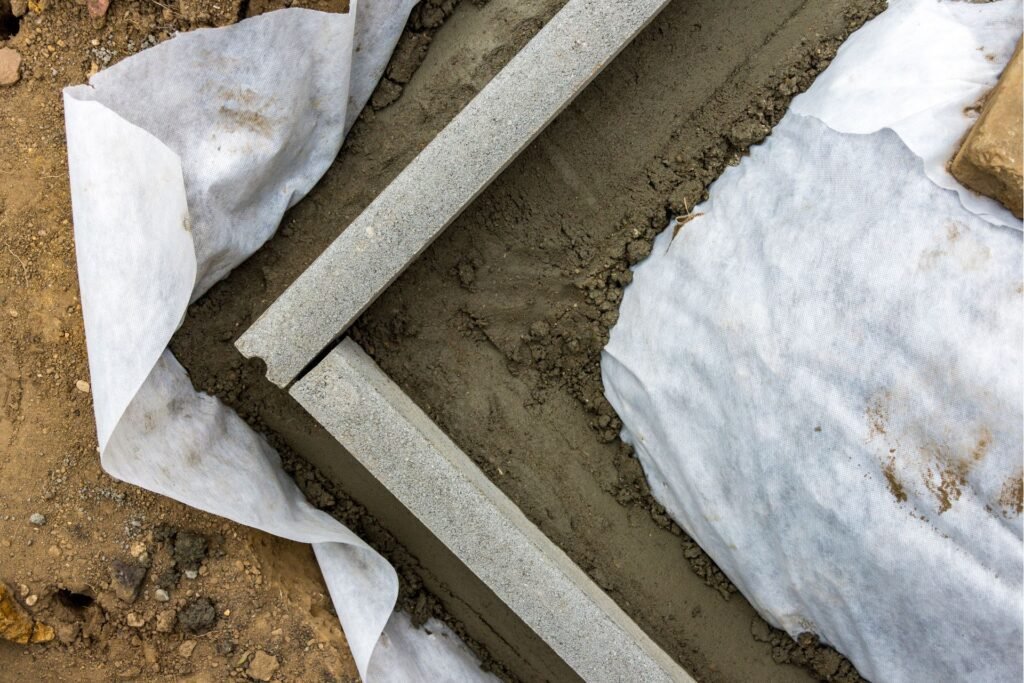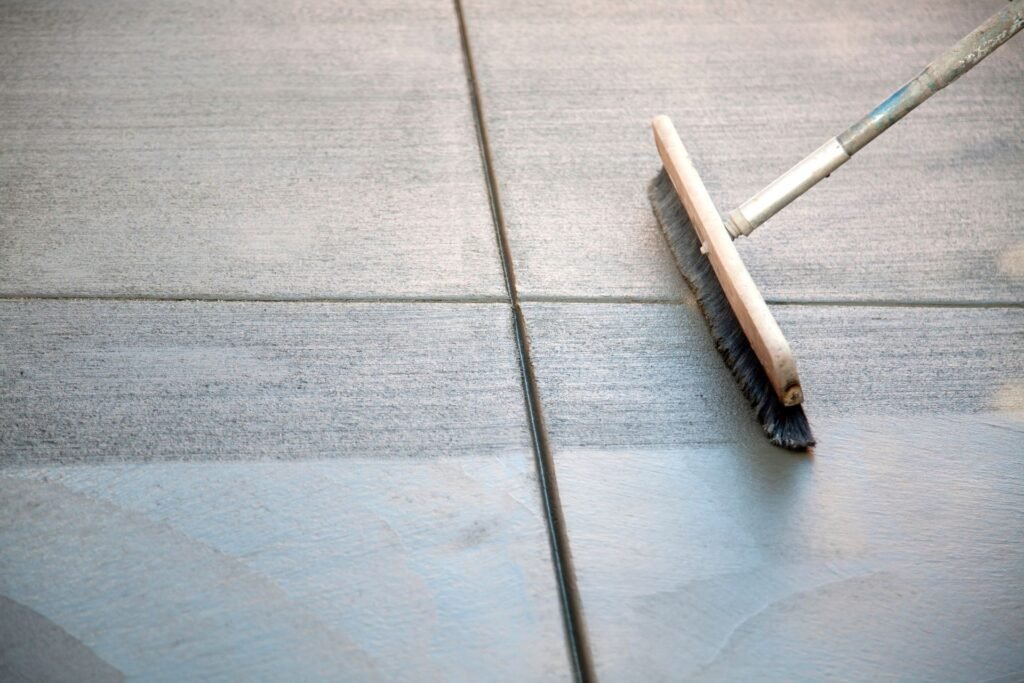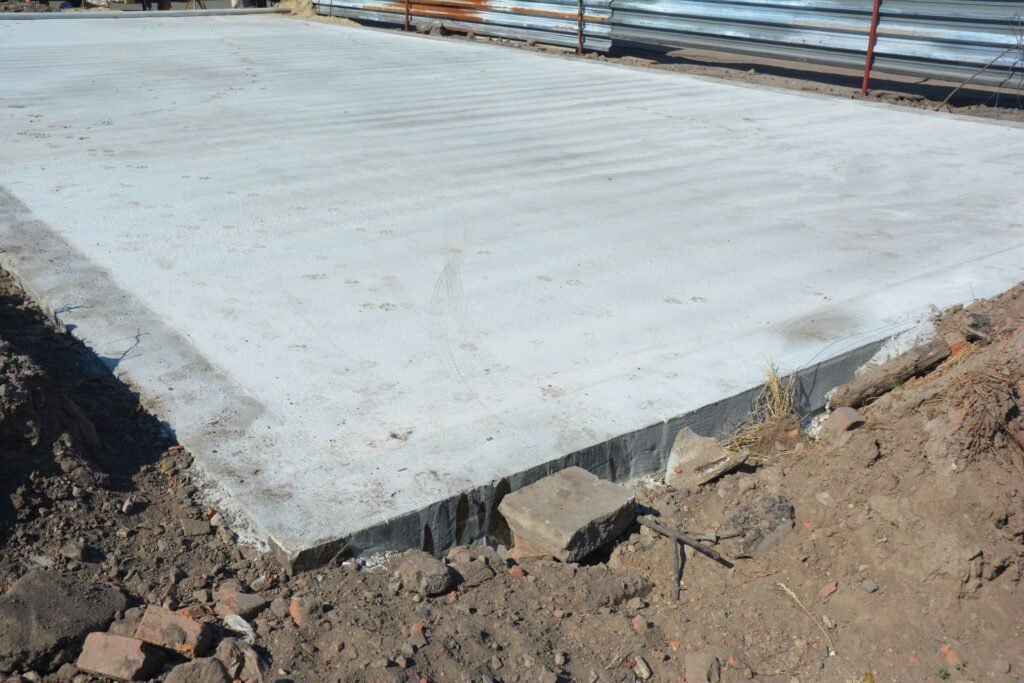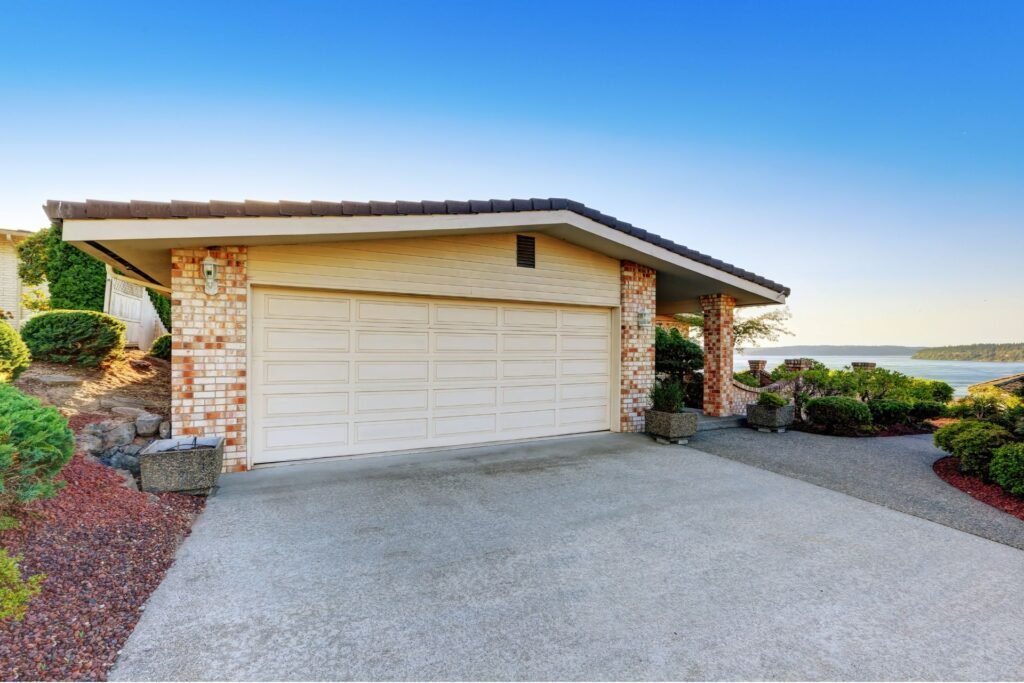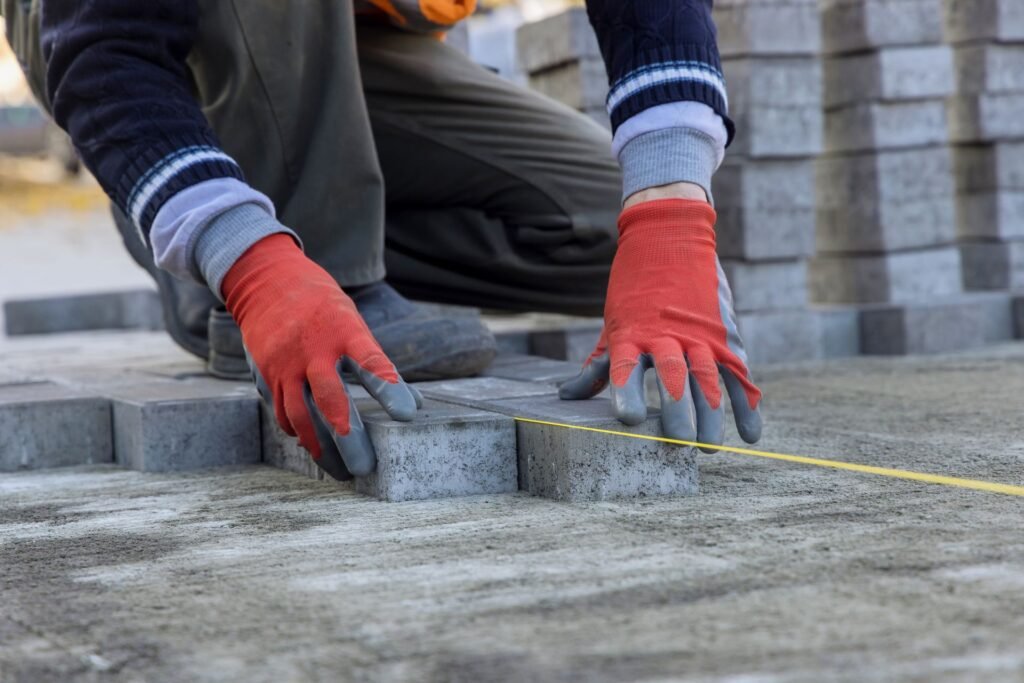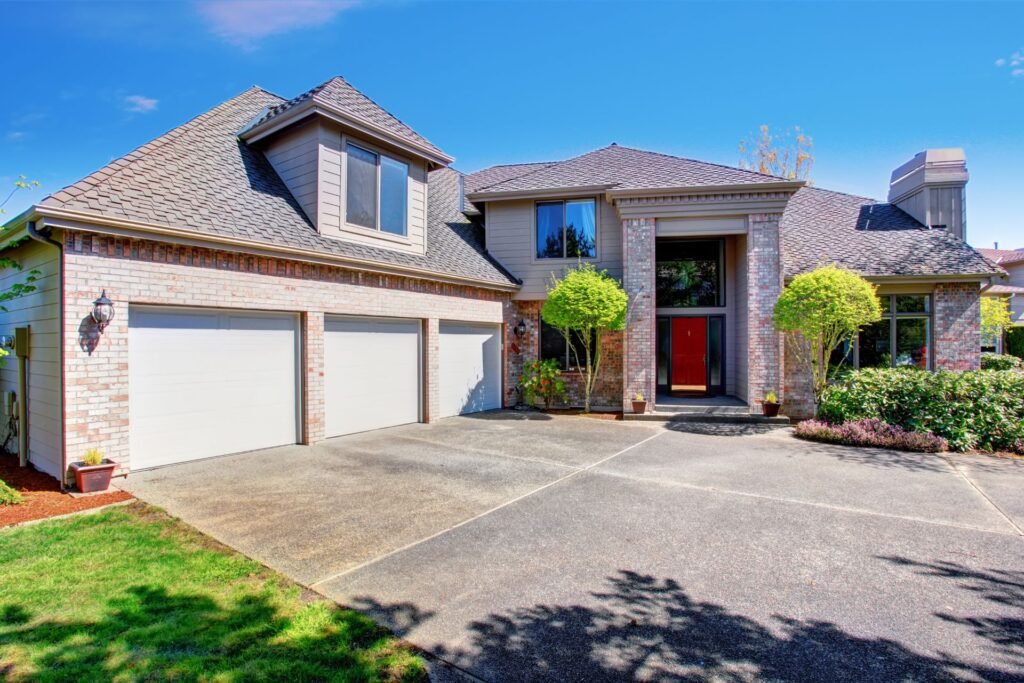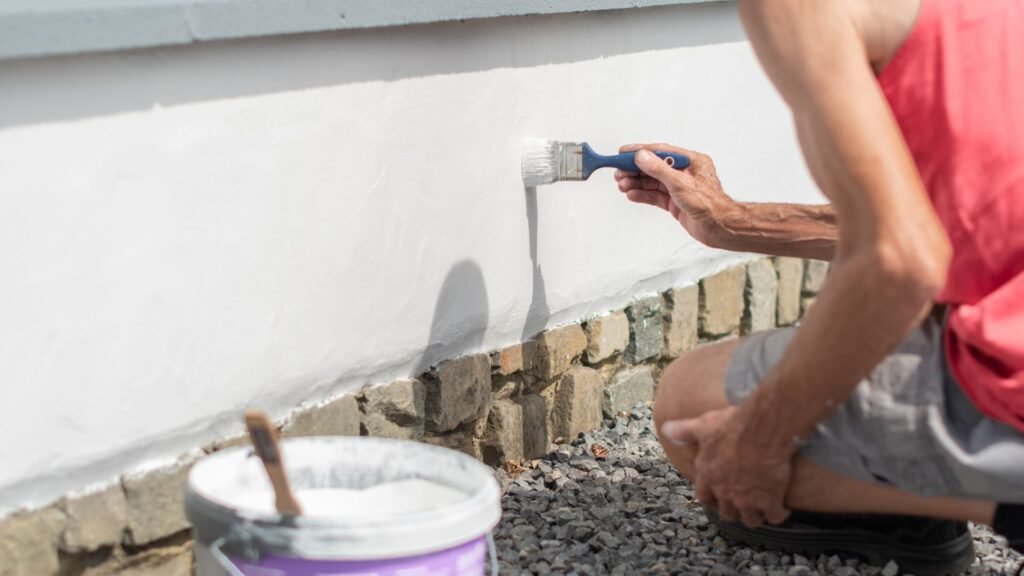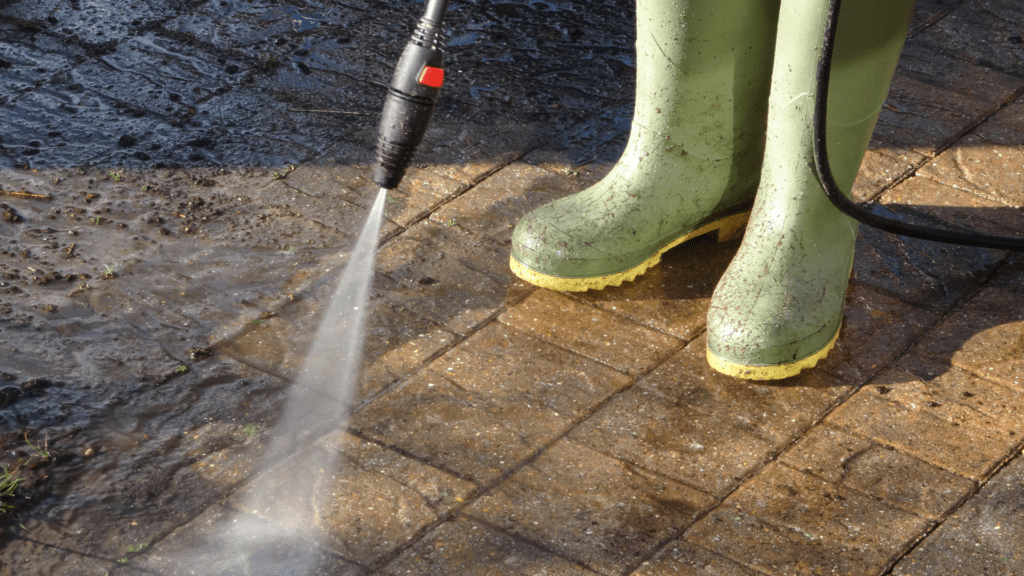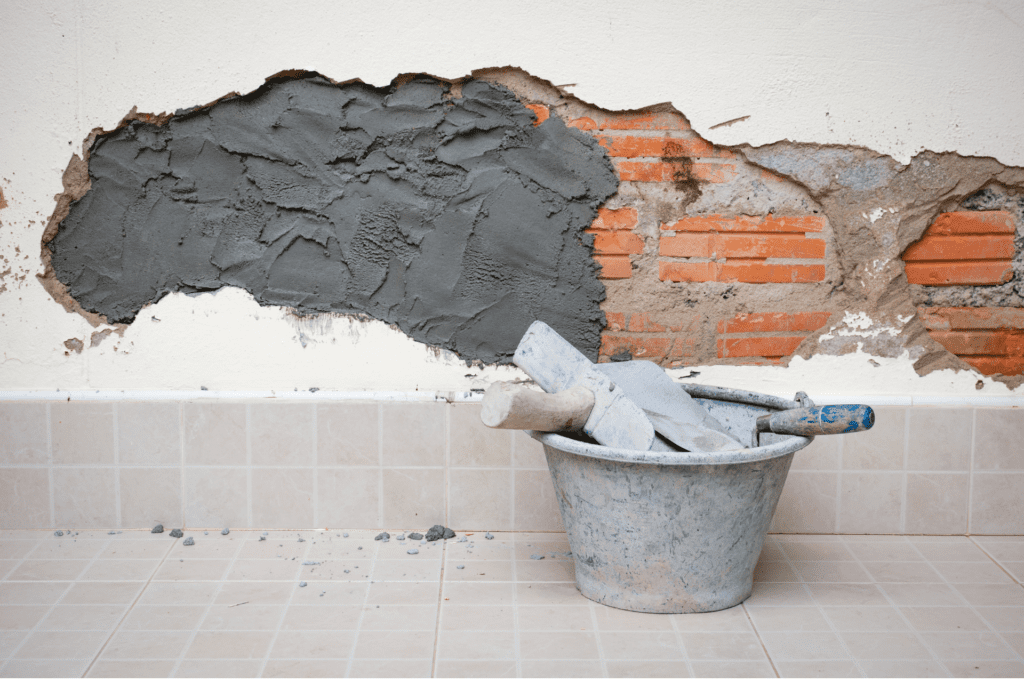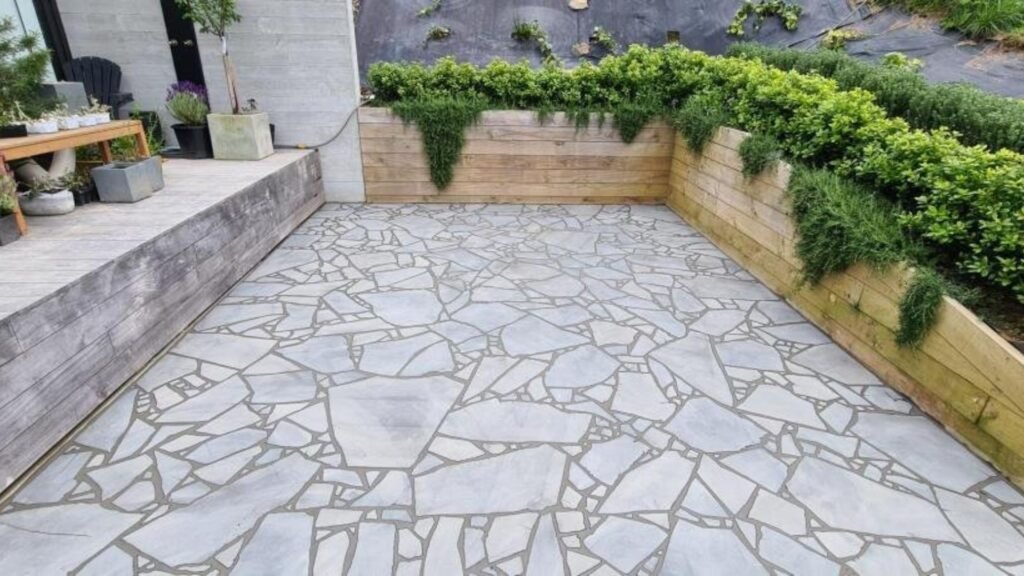Welcome to your ultimate guide on transforming your garden with concrete edging in New Zealand. Whether you’re a seasoned gardener or just starting to design your outdoor space, concrete garden edging is an excellent choice for adding both style and durability to your landscape. This versatile and low-maintenance option not only defines your garden beds with clean lines but also enhances the overall aesthetic of your yard. In this post, we’ll explore everything you need to know about concrete garden edging, from its benefits and popular styles to practical installation tips, helping you create a beautiful and well-organized garden that stands the test of time.
Concrete garden edging in NZ offers a durable and stylish solution for defining garden spaces. It withstands New Zealand’s diverse climate, requires minimal maintenance, and enhances the overall aesthetic of your garden. Available in various styles such as straight, curved, or textured, concrete edging provides both functionality and visual appeal, making it an ideal choice for any outdoor space.
Table of Contents
What Is Concrete Garden Edging?
Concrete garden edging is a landscaping technique that uses concrete as a material to create borders around gardens, flower beds, pathways, or lawns. It serves as a functional and aesthetic boundary that helps to separate different sections of a garden while adding structure and definition to the overall design. Concrete edging stands out from other types of garden edging materials like wood, metal, or plastic due to its unique properties.
Benefits of Concrete Edging
1. Durability
One of the primary advantages of concrete garden edging is its durability. Concrete is known for its robust nature, making it highly resistant to wear and tear over time. Unlike wood, which can rot, or metal, which may rust, concrete can withstand various weather conditions without deteriorating. This is particularly beneficial in regions like New Zealand, where the climate can range from heavy rainfall to intense sun exposure. Concrete edging remains solid and intact for years, providing a long-lasting solution for garden borders.
2. Aesthetic Appeal
Concrete garden edging offers a clean, professional look that enhances the visual appeal of any outdoor space. It can be molded into various shapes and sizes, allowing for creative designs that complement the garden’s overall theme. Whether you prefer straight lines for a modern look or curved edges for a more natural feel, concrete can be customized to suit your aesthetic preferences. Additionally, concrete can be colored or textured to match or contrast with your garden’s existing elements, further enhancing its visual impact.
3. Low Maintenance
Compared to other materials, concrete requires minimal maintenance. Unlike wood, which may need regular staining or sealing, or plastic, which can crack over time, concrete is a set-and-forget option. Once installed, it doesn’t require frequent attention, making it ideal for homeowners who want a beautiful garden without the hassle of constant upkeep. Concrete garden edging is resistant to pests, does not warp or fade easily, and only needs occasional cleaning to remove dirt or debris, ensuring it remains attractive for years with very little effort.
In summary, concrete garden edging is a practical and visually appealing choice for defining garden spaces. Its durability, aesthetic flexibility, and low maintenance needs make it a superior option compared to other edging materials, especially in environments that demand resilience, such as those found in New Zealand.
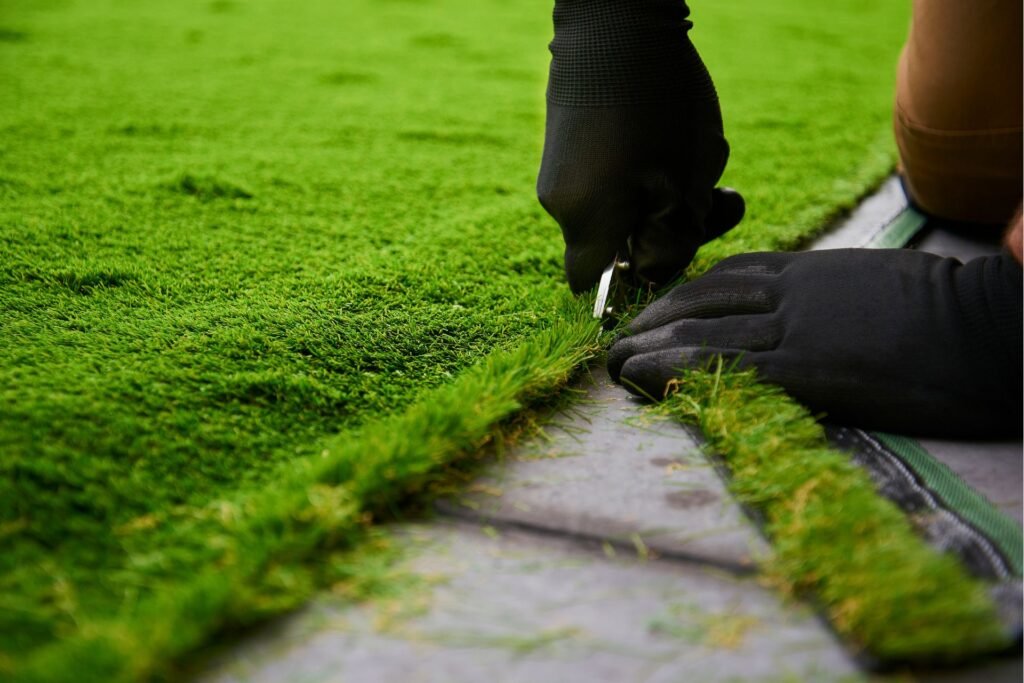
Why Choose Concrete Garden Edging In New Zealand?
When it comes to enhancing your garden’s appeal and functionality, concrete garden edging stands out as a top choice in New Zealand. But why exactly is it such a preferred option? Let’s explore the key reasons why concrete edging is ideally suited to New Zealand’s unique environment, versatile design preferences, and practical financial considerations.
Suitability for New Zealand’s Diverse Climate
New Zealand’s climate is as varied as its stunning landscapes. From the subtropical humidity of the Northland region to the cooler, temperate conditions of the South Island, the country experiences a wide range of weather patterns. Concrete garden edging is particularly well-suited to this diverse climate. Its inherent durability means it can withstand everything from heavy rainfall to frost without deteriorating. Unlike wooden edging, which may rot in wet conditions or metal edging that can rust, concrete remains steadfast. It doesn’t warp, crack, or require frequent replacements, making it an excellent long-term investment for any Kiwi garden.
Versatility to Match Every Garden Style
One of the most compelling reasons to choose concrete garden edging is its incredible versatility. Whether your garden design leans towards the clean lines of modern minimalism or the quaint charm of a traditional cottage garden, concrete can be molded and styled to match. It comes in various shapes, textures, and colors, allowing you to customize the look to perfectly complement your outdoor space. Whether you’re aiming to create a subtle border or make a bold statement, concrete offers the flexibility to achieve your vision. This adaptability ensures that no matter your garden’s theme or the landscape’s natural features, there’s a concrete edging option to suit your needs.
Cost-Effectiveness: A Smart Investment
While the initial cost of concrete garden edging may be higher than some other materials, such as wood or plastic, it’s crucial to consider the long-term benefits. Concrete is remarkably durable, meaning you won’t need to replace or repair it frequently. Over time, this durability translates into significant cost savings. Additionally, concrete edging requires minimal maintenance. Unlike other materials that may need regular treatments, coatings, or replacements, concrete can last for decades with little upkeep. This combination of longevity and low maintenance makes concrete edging a cost-effective choice for homeowners looking to enhance their garden without incurring ongoing expenses.
Concrete garden edging is a practical, versatile, and economically sound choice for gardens across New Zealand. Its ability to withstand the country’s varied climate, adapt to different design styles, and provide long-term cost savings makes it a top choice for anyone looking to enhance their outdoor space. By investing in concrete edging, you’re not just choosing a border for your garden—you’re choosing durability, style, and lasting value.
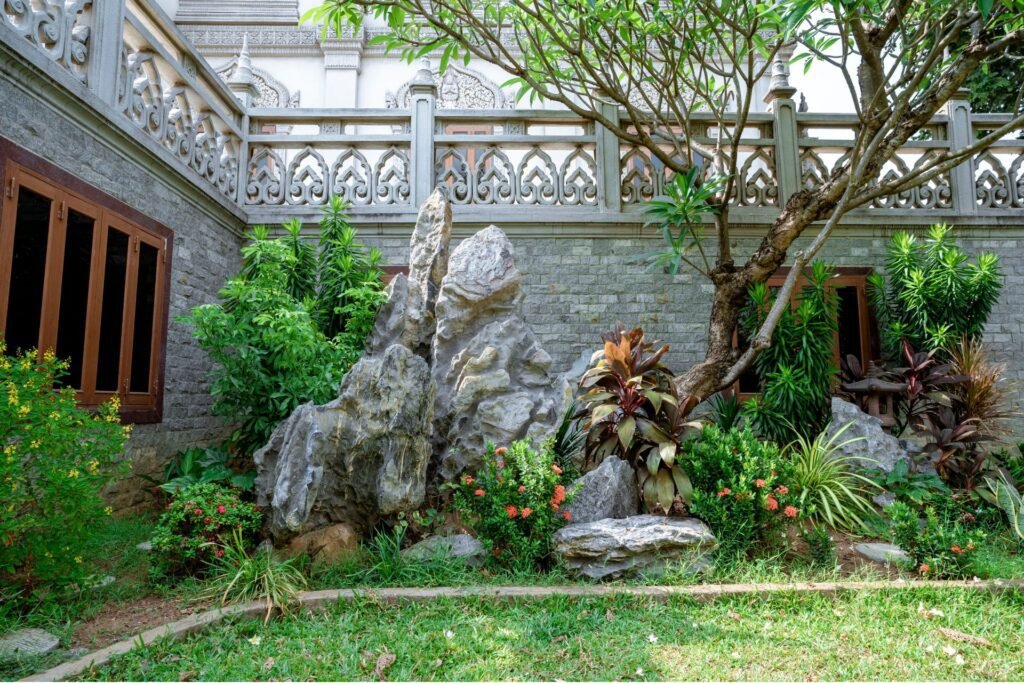
Popular Concrete Garden Edging Styles In NZ
When it comes to enhancing your garden, the right edging can make a significant difference. In New Zealand, concrete garden edging has gained popularity due to its durability, versatility, and aesthetic appeal. Let’s explore some of the most popular concrete garden edging styles in NZ, each offering unique benefits and applications for various garden designs.
Traditional Straight Edging
Description
Traditional straight edging is a timeless choice for garden borders. Its clean, simple lines create a classic look that remains popular among homeowners who appreciate a neat and organized garden space. This style is all about simplicity, making it an excellent choice for those who want to highlight their garden beds without any distractions.
Applications
Straight edging works best in formal garden settings, where structure and symmetry are essential. It’s ideal for gardens with a clear, defined layout, such as those featuring rectangular or square garden beds. If you’re looking to achieve a polished and structured appearance, traditional straight edging is a perfect fit.
Curved Edging
Description
Curved edging introduces a soft, flowing aesthetic to your garden. Unlike straight edging, which emphasizes structure, curved edging brings a sense of movement and natural beauty. This style is perfect for creating gentle, organic shapes that blend seamlessly with the landscape.
Applications
Curved edging is an excellent choice for gardens that embrace a more relaxed and informal design. It works beautifully in spaces that feature winding paths, rounded garden beds, or any area where a softer, more natural look is desired. Whether you’re designing a cottage-style garden or simply want to soften the edges of your lawn, curved edging offers versatility and charm.
Stamped or Textured Edging
Description
Stamped or textured edging is a fantastic way to add visual interest to your garden without compromising on durability. This style mimics the appearance of materials like stone, brick, or wood, offering the look you want with the strength and longevity of concrete. Whether you’re going for a rustic, modern, or traditional vibe, stamped edging can replicate the texture and finish that best suits your garden’s aesthetic.
Applications
This type of edging is particularly useful for homeowners who want to create a distinct boundary while adding texture to their garden. It’s perfect for areas where you want the appearance of natural materials but need the durability that concrete provides. Use stamped or textured edging to enhance garden paths, driveways, or any border where visual appeal is as important as function.
Colored Concrete Edging
Description
Colored concrete edging allows you to introduce vibrant or subtle hues to your garden borders. This option is all about creativity and personalization, giving you the freedom to match your garden’s edging to the overall color scheme of your outdoor space. Whether you prefer bold, contrasting colors or something more subdued, colored edging can transform your garden into a visually cohesive environment.
Applications
Colored concrete edging is ideal for contemporary gardens where color plays a significant role in the design. It’s also a great choice for gardens with a specific theme or those that aim to make a statement. Whether you’re accentuating a particular plant bed or creating a border that stands out, colored edging offers endless possibilities for customization.
Choosing the right concrete garden edging style can significantly enhance the look and feel of your outdoor space. Whether you prefer the clean lines of traditional straight edging, the natural flow of curved edges, the textured appeal of stamped concrete, or the vibrant possibilities of colored edging, there’s a style to suit every garden in New Zealand. With these options, you can create a garden that not only looks stunning but also stands the test of time.
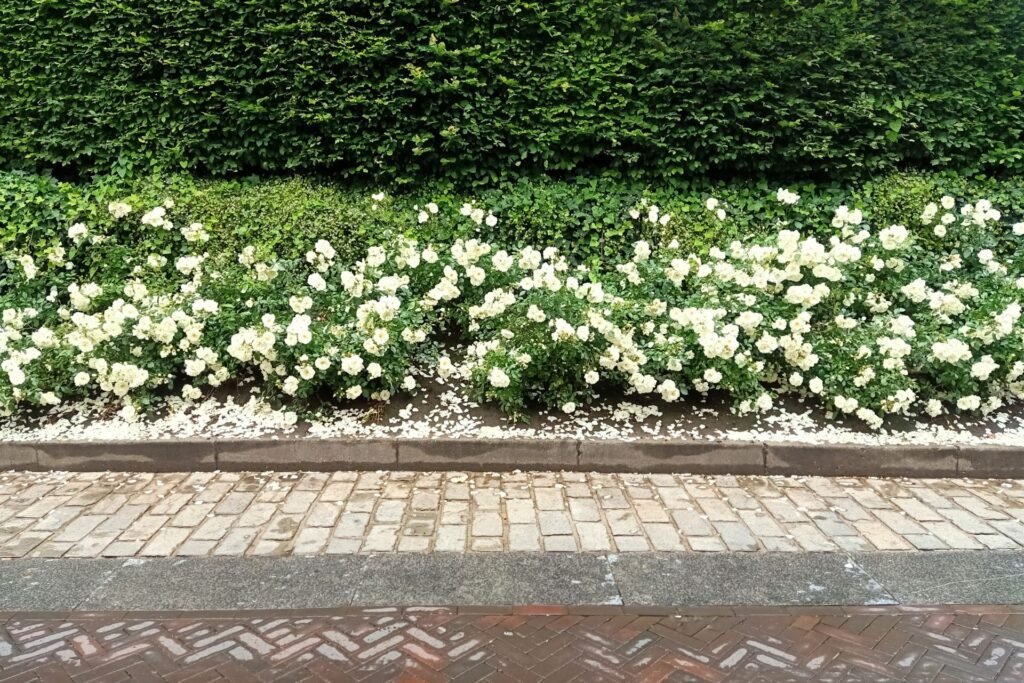
How To Plan And Design Your Concrete Garden Edging
When it comes to enhancing the look of your garden, concrete edging is an excellent way to define spaces and add structure to your outdoor area. However, before diving into the project, careful planning and design are essential to ensure that your garden edging not only serves its purpose but also complements the overall aesthetic of your home. In this guide, we’ll walk you through the steps needed to plan and design the perfect concrete garden edging.
Assessing Your Garden Space
Measure Your Garden Area
The first step in planning your concrete garden edging is to assess the space where the edging will be installed. Start by measuring the length and width of the area you intend to edge. Accurate measurements are crucial for determining the amount of material needed and ensuring that your design fits perfectly within your garden space. Use a tape measure for precise readings, and consider the dimensions of your plants and lawn to leave adequate space for growth.
Consider Your Garden Layout
Next, think about the layout of your garden. Does your garden have a formal, geometric design, or does it feature more natural, organic shapes? This will influence whether you opt for straight lines or curved edging. Straight lines offer a clean, modern look and work well with contemporary garden designs, while curves can create a softer, more natural appearance that complements informal or cottage-style gardens. Visualize the lines you want to create and mark them out with string or a garden hose to see how they look before making a final decision.
Choosing the Right Style
Match Your Home’s Aesthetic
Your concrete garden edging should harmonize with the style of your home and garden. Consider the architectural elements of your house—such as the color, texture, and design—and choose an edging style that complements these features. For example, if you have a rustic home, opting for rough-textured or stone-like concrete may enhance the overall theme. In contrast, a sleek, smooth finish may be better suited for a modern, minimalist home.
Incorporate Personal Preferences
Personalizing your garden edging is where creativity comes into play. Think about whether you prefer subtle, understated designs or something more eye-catching. You can customize the shape of the edging by adding curves or incorporating specific colors that reflect your personality or garden theme. Additionally, consider adding stamped patterns or decorative finishes that mimic natural stone, brick, or even wood. These customizations can significantly elevate the look of your garden and make it uniquely yours.
Budgeting for Your Project
Cost Breakdown
Budgeting is a crucial part of planning your concrete garden edging project. Begin by estimating the cost of materials, which typically includes concrete, molds, and any additional design elements like coloring agents or stamps. If you plan to use specialty tools or rent equipment, factor in those costs as well. Don’t forget to account for labor, whether it’s your time or the cost of hiring a professional. Also, consider any additional features such as decorative stamps or color treatments, which can add to the overall expense.
DIY vs. Professional Installation
One of the key decisions you’ll need to make is whether to take on the project yourself or hire a professional. If you’re handy with tools and enjoy DIY projects, doing it yourself can be cost-effective and rewarding. However, be honest about your skill level—concrete work can be challenging, especially when it comes to achieving a polished finish. On the other hand, hiring a professional ensures high-quality results and saves you time, but it comes with a higher price tag. Weigh the pros and cons of each option, considering factors such as your budget, timeline, and desired outcome.
Planning and designing your concrete garden edging doesn’t have to be overwhelming. By assessing your space, choosing the right style, and carefully budgeting, you can create beautiful, functional edging that enhances your garden’s appeal. Whether you go for a sleek, modern look or a more natural, curved design, your garden edging will provide a lasting framework for your outdoor space, adding both value and visual interest.
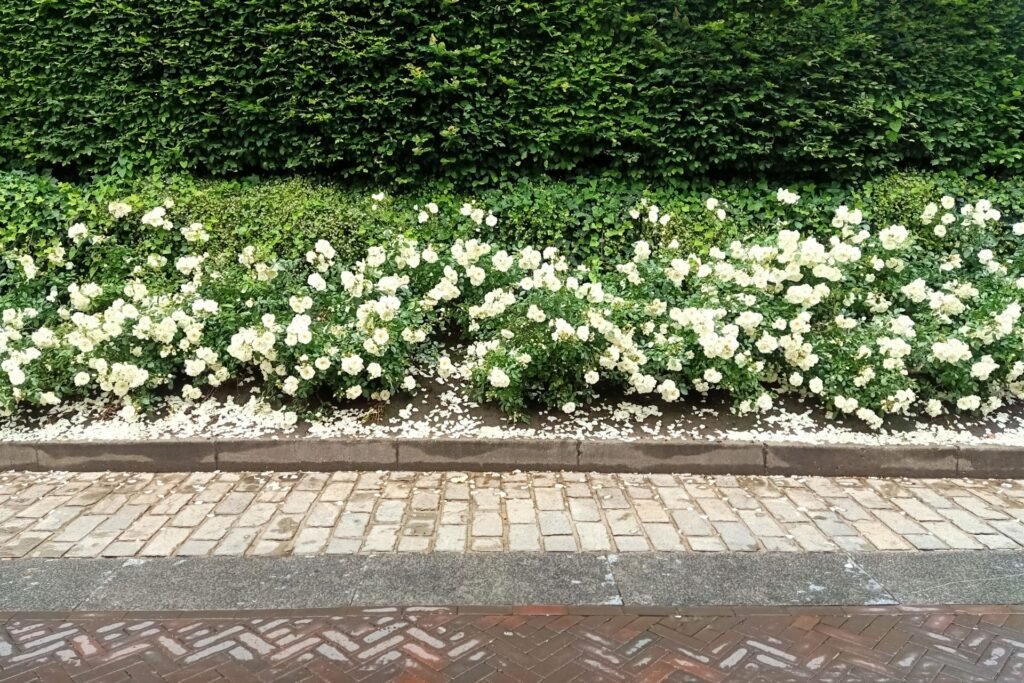
Step-By-Step Guide To Installing Concrete Garden Edging
Creating a beautiful, long-lasting garden edge using concrete requires careful planning and execution. This guide walks you through the entire process, from preparation to finishing touches, ensuring that your garden edges are both functional and aesthetically pleasing. Whether you’re a DIY enthusiast or a seasoned gardener, this comprehensive guide will help you achieve professional-quality results.
Preparation
The first and most crucial step in installing concrete garden edging is thorough preparation. Proper preparation not only ensures a smooth installation but also guarantees the longevity of your garden edging.
Gather Materials
Before you begin, gather all the essential tools and materials. Here’s what you’ll need:
- Concrete mix
- Shovel and spade
- String or spray paint (for marking)
- Measuring tape
- Level
- Tamping tool
- Edging tools (such as a trowel and concrete edger)
- Sand or gravel (for the base layer)
- Safety gear (gloves, protective eyewear)
Site Preparation
Start by clearing the area where you plan to install the edging. Remove any debris, rocks, or vegetation. Ensure the ground is as level as possible, as this will make the installation process easier and result in a cleaner finish. If necessary, fill in any low spots with soil and tamp it down to create a solid base. Proper site preparation will prevent shifting or uneven edges after installation.
Installation Process
With your materials gathered and the site prepped, it’s time to start the installation. Follow these steps to ensure your concrete garden edging is durable and visually appealing.
Step 1: Mark Out the Garden Edge
Using string or spray paint, mark the desired path for your garden edging. Ensure the lines are straight or smoothly curved, depending on your design. This step is critical as it serves as your guide throughout the installation.
Step 2: Dig a Trench
Next, dig a trench along your marked line. The trench should be deep enough to accommodate both the base layer and the concrete, typically about 4 to 6 inches deep and 6 inches wide. The trench depth may vary depending on the height of your edging. Ensure the bottom of the trench is level by checking with a spirit level.
Step 3: Lay a Base Layer
Add a 2-inch layer of sand or gravel to the bottom of the trench. This base layer helps with drainage and provides a stable foundation for the concrete. Use a tamping tool to compact the sand or gravel, ensuring it’s evenly distributed and level.
Step 4: Pour and Shape the Concrete
Prepare your concrete mix according to the manufacturer’s instructions. Pour the concrete into the trench, filling it up to the desired height. As you pour, use a trowel to smooth the surface and shape the edging. You can create a rounded or beveled edge using a concrete edger tool for a more polished look. This step requires patience and precision to achieve a professional finish.
Step 5: Allow the Concrete to Cure
After shaping the concrete, allow it to cure for at least 24 hours before applying any finishing touches. Avoid disturbing the area during this time to prevent cracks or shifts in the concrete. Once cured, you can apply a concrete sealant to protect the surface from the elements or add a coat of paint if you want a specific color.
Tips for a Professional Finish
Achieving a professional-quality garden edge involves more than just following the steps. Here are some additional tips to ensure your project stands out:
Edging Tools
Invest in quality edging tools like a concrete edger and a trowel. These tools help create clean, smooth lines and prevent the edges from crumbling or cracking.
Weather Considerations
Timing is everything. Avoid pouring concrete during extreme weather conditions. Hot temperatures can cause the concrete to dry too quickly, leading to cracks, while rain can wash away the mix before it sets. Ideally, choose a day with mild, dry weather for the best results.
Installing concrete garden edging is a rewarding project that can enhance the beauty and functionality of your outdoor space. By following this step-by-step guide and paying attention to the details, you’ll create durable, attractive garden borders that stand the test of time. Remember, proper preparation and the right tools are key to a successful installation, so take your time and enjoy the process.
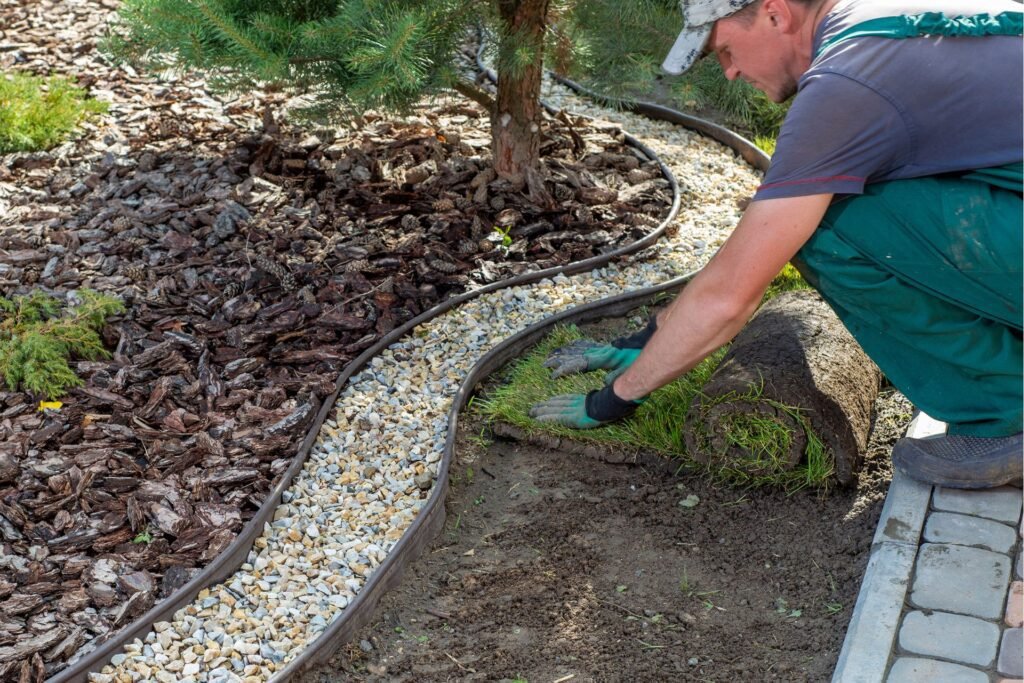
Maintenance Tips For Concrete Garden Edging
Concrete garden edging is a stylish and durable way to define the borders of your garden, creating a neat and polished look that complements any landscaping design. However, like any outdoor feature, it requires regular maintenance to keep it looking its best over time. Below, we’ve outlined some essential maintenance tips to ensure your concrete garden edging remains in top condition for years to come.
Regular Cleaning
To keep your concrete garden edging in pristine condition, regular cleaning is essential. Over time, dirt, moss, and debris can accumulate on the surface, leading to discoloration and potential damage. Start by sweeping the edging with a stiff-bristled broom to remove loose debris. For a more thorough clean, use a pressure washer or a garden hose with a high-pressure nozzle. If moss or algae are present, a mixture of water and mild detergent can be applied, followed by scrubbing with a brush. Rinse the area thoroughly to prevent any detergent residue from lingering, which could harm nearby plants.
Sealing
Sealing your concrete garden edging is a proactive way to protect it from the elements. Concrete is porous and can absorb moisture, leading to cracks, stains, and even frost damage during colder months. By applying a high-quality concrete sealer, you create a protective barrier that repels water, resists stains, and extends the lifespan of your edging. It’s recommended to seal your concrete every 2-3 years, depending on the climate and exposure to weather. When selecting a sealer, choose one that is appropriate for outdoor use and offers UV protection to prevent fading from the sun.
Repairing Cracks
Even with regular maintenance, minor cracks in concrete garden edging can occur due to natural settling, temperature changes, or wear and tear. Addressing these cracks early is crucial to prevent them from spreading and causing more significant damage. For small cracks, a concrete patching compound can be used. Clean the crack thoroughly, removing any loose debris, then apply the compound with a putty knife, ensuring it fills the crack completely. Smooth the surface, and allow it to dry according to the manufacturer’s instructions. For larger cracks or extensive damage, consider consulting a professional to assess and repair the edging.
Long-Term Care
Concrete garden edging, when well-maintained, can last for decades. To ensure its longevity, make it a habit to inspect the edging annually. Look for any signs of wear, such as cracks, chips, or shifting. Addressing these issues promptly will prevent them from escalating into larger problems. Additionally, check that the edging remains level and stable. Over time, soil erosion or root growth can cause sections to shift. If you notice any movement, re-level the edging by adjusting the surrounding soil or adding a stabilizing material underneath. Regular maintenance not only preserves the appearance of your garden but also saves you from costly repairs in the future.
By following these simple yet effective maintenance tips, your concrete garden edging will continue to enhance your outdoor space, providing a clean and defined border that stands the test of time. Remember, a little care goes a long way in protecting your investment and keeping your garden looking its best.

Inspiring Concrete Garden Edging Ideas
Creating a beautiful garden is all about the details, and one of the most effective ways to enhance your outdoor space is through thoughtfully designed garden edging. Concrete garden edging, in particular, offers a versatile and durable solution that can complement any garden style. Whether you prefer a classic, modern, or rustic look, there’s a concrete edging option that will suit your needs. Let’s explore some inspiring ideas that can transform your garden into a stunning oasis.
Formal Garden Edges
If you love the timeless elegance of traditional gardens, formal garden edging is the perfect choice. This style is characterized by straight, structured lines that create a sense of order and symmetry. Concrete edging in a formal garden typically features clean, crisp lines that define flower beds, pathways, and lawns. The result is a polished and refined look that exudes sophistication. Formal garden edges work exceptionally well with neatly trimmed hedges, symmetrical planting patterns, and classical garden elements like fountains and statues.
Modern Minimalist Edges
For those who prefer a contemporary aesthetic, modern minimalist edges are a great option. This style is all about simplicity and clean lines. Think sleek, straight edges that seamlessly integrate with the overall landscape design. Concrete edging in a modern garden is often low-profile and understated, allowing the plants and other garden features to take center stage. The key to achieving a modern minimalist look is to focus on geometry and repetition, using the edging to create a cohesive, uncluttered space. This approach works beautifully in urban gardens, where space is often limited, and every element needs to serve a purpose.
Rustic and Natural Edges
If you’re drawn to the charm of natural, rustic gardens, consider incorporating curved, textured concrete edges that blend seamlessly with the environment. This style is perfect for gardens that aim to mimic the beauty of nature. Rustic and natural edges often feature irregular shapes, rough textures, and a more organic flow. These edges are designed to look as if they’ve always been part of the landscape, creating a harmonious connection between the garden and its surroundings. This approach is ideal for cottage gardens, woodland settings, or any space where you want to create a relaxed, inviting atmosphere.
Colourful and Playful Edges
For a garden that bursts with personality, colorful and playful concrete edging is the way to go. This style embraces creativity and fun, using vibrant colors and unique shapes to make a statement. Colored concrete allows you to match or contrast the edging with the plants, flowers, and other garden features, adding a dynamic visual element to your outdoor space. Playful edges can be used to define different garden zones, create eye-catching patterns, or simply add a pop of color that brightens up the entire garden. Whether you want to highlight a specific area or create a whimsical vibe, colorful concrete edging offers endless possibilities.
Concrete garden edging is more than just a practical way to separate different areas of your garden; it’s an opportunity to express your personal style and enhance the beauty of your outdoor space. Whether you opt for the formality of straight lines, the sleekness of modern design, the rustic charm of natural curves, or the vibrant appeal of colorful edges, there’s a concrete edging solution that’s perfect for your garden. With the right design, your garden edging can become a defining feature that brings your entire landscape together, making your garden not just a space to admire, but a place to experience and enjoy.

Where To Source Concrete Garden Edging In New Zealand
When it comes to enhancing your garden with durable and stylish concrete edging, New Zealand offers a wide range of options. Whether you’re a DIY enthusiast or looking for professional installation, sourcing quality materials is key to achieving a beautiful and long-lasting garden design. Here’s a comprehensive guide to finding the best concrete garden edging supplies across New Zealand.
Local Suppliers
One of the most reliable ways to get top-notch concrete garden edging is by purchasing from local suppliers. Supporting local businesses not only helps the economy but also ensures you get materials suited to the New Zealand climate and soil conditions. Here are some reputable suppliers to consider:
1. Firth Concrete: A well-known name in the industry, Firth offers a range of concrete garden edging products. Their durable and versatile solutions are perfect for both residential and commercial projects.
2. Allied Concrete: Known for their high-quality concrete products, Allied Concrete provides a variety of edging options that cater to different design preferences and garden layouts.
3. Stevenson Concrete: With decades of experience, Stevenson Concrete offers a wide selection of concrete edging materials. Their products are designed to withstand New Zealand’s unique weather conditions.
Custom Solutions
For those who want something unique, several companies in New Zealand offer custom concrete edging designs and installations. These professionals can create bespoke solutions tailored to your garden’s specific needs, ensuring a perfect fit and finish. Some companies to explore include:
1. Kerbworx NZ: Specializing in custom concrete garden edging, Kerbworx NZ provides personalized designs and professional installation services. Whether you need straight lines or intricate curves, they can bring your vision to life.
2. EdgePro Concrete Kerbing: Offering a range of styles and finishes, EdgePro creates custom concrete edging that complements your garden’s aesthetic. Their expert team ensures a flawless installation process.
3. Garden Edging NZ: Known for their bespoke designs, Garden Edging NZ offers tailored concrete edging solutions. Their services are ideal for those looking to add a unique touch to their garden.
Online Resources
If you prefer the convenience of shopping online or enjoy DIY projects, there are several online stores and resources where you can purchase concrete edging materials and kits. These platforms offer a variety of products, from ready-made solutions to components for creating your own designs. Some popular online options include:
1. Mitre 10: One of New Zealand’s largest home improvement retailers, Mitre 10 offers a range of concrete garden edging products online. You can browse their extensive catalog and have your purchases delivered directly to your door.
2. Bunnings Warehouse: Another major player in the DIY space, Bunnings Warehouse provides a wide selection of concrete edging materials online. They also offer helpful guides for those embarking on DIY garden projects.
3. NZ Landscape Supplies: Specializing in landscaping materials, NZ Landscape Supplies has an excellent online store where you can find a variety of concrete edging products. They cater to both DIY enthusiasts and professional landscapers.
Finding the right concrete garden edging in New Zealand is easy when you know where to look. Whether you choose to support local suppliers, invest in custom solutions, or shop online, there’s no shortage of options to suit your garden’s needs. By selecting high-quality materials from reputable sources, you can create stunning and durable garden edges that will enhance the beauty of your outdoor space for years to come.
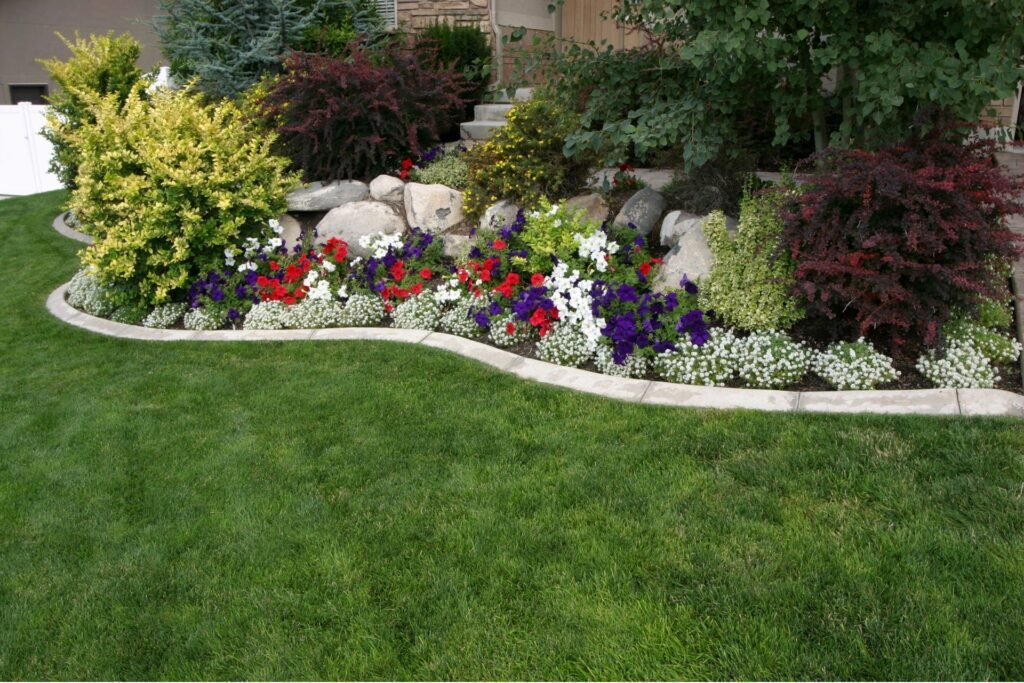
FAQs: About Concrete Garden Edging NZ
What is concrete garden edging?
Concrete garden edging refers to the use of concrete materials to create borders or edges around garden beds, pathways, or lawns. It helps define garden spaces, prevents soil and mulch from spreading, and adds a polished look to outdoor areas.
Why should I choose concrete garden edging for my garden in New Zealand?
Concrete garden edging is durable, low-maintenance, and can withstand New Zealand’s diverse climate conditions. It also offers a wide range of design options, allowing you to customize the look of your garden while ensuring long-lasting performance.
What are the different styles of concrete garden edging available?
Popular styles of concrete garden edging include traditional straight edges, curved edges for a natural flow, stamped or textured designs that mimic stone or brick, and colored concrete edging for a more personalized touch.
How does concrete garden edging compare to other types of garden edging?
Compared to wood, metal, or plastic edging, concrete is more durable and requires less maintenance. While the initial cost might be higher, its long-term benefits, such as longevity and aesthetic appeal, often make it a more cost-effective choice.
Can I install concrete garden edging myself, or should I hire a professional?
Installing concrete garden edging can be a DIY project if you have basic construction skills and the necessary tools. However, for complex designs or if you want a flawless finish, hiring a professional is recommended.
How do I maintain concrete garden edging?
Concrete garden edging is relatively low-maintenance. Regular cleaning, sealing every few years, and prompt repair of any minor cracks will help keep your edging looking great and functioning well for years.
Is concrete garden edging suitable for all types of gardens?
Yes, concrete garden edging is versatile and can be adapted to suit various garden styles, from modern and minimalist to rustic and traditional. The key is to choose a design that complements your garden’s overall aesthetic.
What are the costs associated with installing concrete garden edging in NZ?
The cost of concrete garden edging depends on factors such as the length of the edging, the complexity of the design, and whether you choose to DIY or hire a professional. Generally, it is a cost-effective option due to its durability and low maintenance needs.
Where can I buy concrete garden edging in New Zealand?
Concrete garden edging materials can be purchased from local hardware stores, garden centers, and specialized landscaping suppliers in New Zealand. Many suppliers also offer custom designs and professional installation services.
How do I choose the right style of concrete garden edging for my space?
When choosing a style, consider your garden’s layout, the overall aesthetic of your home, and your personal preferences. Straight edges work well in formal gardens, while curved or textured edges suit more organic, natural spaces.
Conclusion
Concrete garden edging offers numerous advantages that can significantly enhance the aesthetics and functionality of any outdoor space. By choosing concrete edging, homeowners can enjoy a durable, low-maintenance solution that adds a clean, polished look to their gardens. The process of getting started is straightforward, whether you’re taking on a DIY project or opting for professional installation. With clear benefits like improved garden structure, weed prevention, and long-lasting appeal, concrete garden edging is an excellent choice for New Zealand gardens. If you’re considering upgrading your outdoor space, now is the perfect time to explore the possibilities of concrete edging. Whether you want to tackle it yourself or bring in an expert, investing in concrete garden edging will undoubtedly boost the beauty and practicality of your garden, leaving you with an outdoor area that stands the test of time.
About the Author:
Mike Veail is a recognized digital marketing expert with over 6 years of experience in helping tradespeople and small businesses thrive online. A former quantity surveyor, Mike combines deep industry knowledge with hands-on expertise in SEO and Google Ads. His marketing strategies are tailored to the specific needs of the trades sector, helping businesses increase visibility and generate more leads through proven, ethical methods.
Mike has successfully partnered with numerous companies, establishing a track record of delivering measurable results. His work has been featured across various platforms that showcase his expertise in lead generation and online marketing for the trades sector.
Learn more about Mike's experience and services at https://theleadguy.online or follow him on social media:

